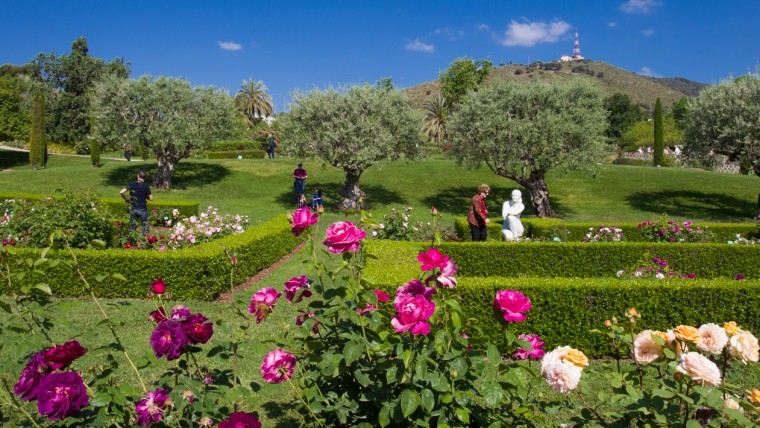
Cervantes Park is located on land once occupied by the Estela torrent, which collected water that flowed down from the summit of Sant Pere Màrtir. Visitors can walk up it from Av Diagonal, which is where the main entrance is, or take a more relaxed, slow walk down from Ronda de Dalt.

History
Barcelona’s ties with roses go back a long way. A good example of this is the international competition held at the Palau de Pedralbes from 1929 to 1936, which the world’s leading rose specialists took part in.
Open cut-rose competitions were held in the park’s rose garden towards the end of the 1980s, but the competition fell into decline after its initial success.
The current Barcelona International New Roses Competition, which was launched at the start of the 21st century, is the successor to this very noteworthy historical past.
It was first held in 2001 and has since become a great showcase for new creations from around the world, enabling the city to renew and strengthen its ties with roses.
Obtaining a new rose is no mean feat, which is why the Barcelona competition is so important. New plants, created from hybrids and artificial selection have to be developed and, over time, display some outstanding features. It may take a number of years before a variety is achieved with sufficient quality for entering competitions and, where successful, marketing.

Art and Architecture
The Parc de Cervantes has two monoliths, one of stone dedicated to the writer and diplomat Àngel Ganivet that was created by the sculptor Jaume Monràs, and the other made in marble, in homage to Concha Espina, by Juan Díaz de la Campa, featuring a bronze medallion with a picture of the writer at the top.
The rose garden has two sculptures: Rombes bessons (Rhombus Twins – 1977), by Andreu Alfaro, a geometric work near the upper part of the rose garden, and a female nude opposite the perfume garden, entitled Serenitat (Serenity – 1964) by Eulàlia Fàbregas de Sentmenat.
Near the centre of the park there is an immense gravelled square exposed to the sun with children’s games, a few table-tennis tables and a fountain. This is an ideal spot for anyone who wants to sunbathe during the summer or make the most of the winter sunshine. There is also a picnic area nearby, shaded by a pine tree that is often used for Tai-Chi.
-
- Phone number
- Tel.: 010
-
- Accessibility
- Accessible for people with physical disabilities
-
- Titularity
- Public center
- Address:
- Av Diagonal, 706
- Districte:
- Les Corts
- Neighborhood:
- Pedralbes
- City:
- Barcelona
Timetable
| Periode | Dies | Hores |
|---|---|---|
Horari d'hivern de l'1 de novembre al 31 de març |
Cada dia | de 08.00 h a 19.00 h |
Horari d'estiu de l'1 d'abril al 31 d'octubre |
de 08.00 h a 21.00 h |
aproximada, en funció de
l'horari solar (tanquen
quan es fa fosc, al capvespre)

